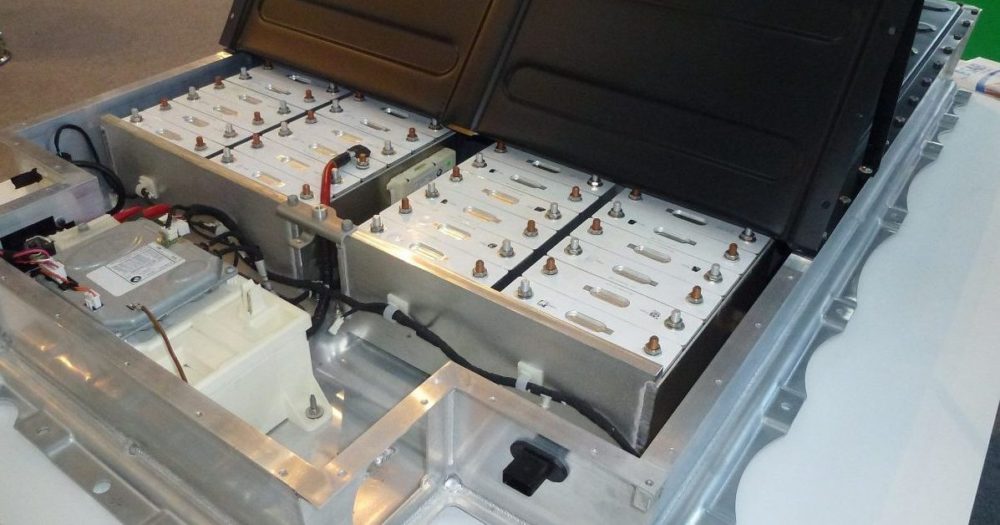The case for switching to electric vehicles (EVs) is nearly settled. They are cheaper to use, cut emissions, and offer a whisper quiet ride. One of the last arguments available to the EV-hater club, which is largely comprised of thinly veiled oil-industry front groups funded by the Koch brothers, focuses on the impacts from the materials used to make an EV’s battery pack.
Specifically, the use of lithium, cobalt, nickel, and other metals that are part of an EV lithium-ion battery pack has raised red flags about the poor human rights and worker protection records in the countries where these materials are mined.
A lot of these warnings have been incorrectly categorized under “EVs and rare earth metals.” Though neither lithium nor cobalt are rare earth metals, and rare earth metals aren’t nearly as rare as precious metals like gold, platinum, and palladium, there are important issues surrounding the production of lithium-ion batteries that must be acknowledged and addressed.
It is also important to note that these impacts are not happening just because of EVs. They are also being driven by the global demand for cell phones, laptop computers, and the multitude of other electronic devices that use lithium-ion batteries.
As EVs gain market share, they will be more responsible for the impacts from battery production. But today, EVs comprise a small fraction of global vehicle sales. So, concerns about lithium-ion batteries should be directed not just to the suppliers of EV battery packs, but also toward Apple, Samsung, and the other companies that source lithium-ion batteries for their electronic goods.
Let’s also not forget that the supply chain for gasoline-powered vehicles has its fair share of issues, ranging from human rights violations like the use of child labor, to disastrous oil spills like Deepwater Horizon. But unlike gasoline-powered vehicles, EVs will be able to take advantage of emerging battery chemistries that don’t rely on cobalt or other materials that are linked to exploitative practices.
Cobalt and electric vehicle batteries
Cobalt, a bluish-gray metal found in the Earth’s crust, is one of today’s preferred components used to make the lithium-ion batteries that power laptops, cell phones, and EVs. Cobalt is mined all over the world, but 50 to 60 percent of the global supply comes from the Democratic Republic of Congo (DRC), which has a poor human rights track record. According to UNICEF and Amnesty International, around 40,000 children are involved in cobalt mining in DRC where they make only $1 – $2 USD per day. DRC’s cobalt trade has been the target of criticism for nearly a decade, and the U.S. Labor Department lists Congolese cobalt as a product it has reason to think is produced by child labor. More troubling, cobalt demand has tripled in the past five years and is projected to at least double again by 2020.
What can be done about EV batteries sourcing issues
First, companies should be held accountable for enacting and enforcing policies to only use ethically-sourced materials. Some companies are off to a good start. Apple has pledged to end its reliance on mining altogether, and one day make its products from only renewable resources or recycled materials. Other tech giants like HP, Samsung, and Sony joined an effort called the “Responsible Cobalt Initiative.” Members of the initiative pledged to follow global guidelines for mining supply chains, which call for companies to trace how cobalt is being extracted, transported, manufactured and sold.
On the EV side of things, Tesla has committed to sourcing materials only from North America for its new battery production facility, the Gigafactory. In 2015, Tesla secured two contracts with mining companies to explore lithium deposits in northern Nevada and Mexico, though Tesla still relies on cobalt that may have been sourced from the DRC.
Both Ford and GM get their EV batteries from LG Chem, who has said they have stopped using DRC-sourced cobalt and stated that neither Ford nor GM batteries rely on DRC-sourced cobalt, but some of the LG practices and statements have been called into question by the WaPo.
Second, recycling can help reduce the need to search for new source of battery materials, or rely on sourcing materials from countries with poor worker protections. Cobalt, for example, (as opposed to gasoline) is fully recyclable and roughly 15 percent of U.S. cobalt consumption is from recycled scrap today.
Companies like Umicore are in the cobalt recycling business and have demonstrated that there is a business model for recycling cobalt that can help reduce demand for DRC-mined cobalt.
Third, battery technology is continuing to improve. The multitude of battery applications has generated a strong financial incentive for researchers to find the next greatest battery chemistry, and some of the most promising next-gen battery types don’t rely on cobalt at all.
Lithium-titanate and lithium-iron-phosphate, for example, are gaining importance in EV powertrain applications and don’t need cobalt. Other battery chemistries that rely on magnesium, sodium, or lithium-sulfur are also gaining traction as they have the potential to beat lithium-ion batteries on energy density and cost. Battery research has seen a big shift in recent years. Nearly half of the presentations at the Battery Symposium in Japan were once about fuel cells and lithium-ion battery materials. But since 2012, these topics have been supplanted by presentations about solid-state, lithium-air and non-lithium batteries.
Overall, the human rights issues related to the lithium-ion battery supply chain cannot be ignored. At the same time, they shouldn’t be used by the oil industry and their allies as a rallying cry to dismantle EV policy support, or as reason to stop the growth of the EV industry. Again, it’s not just EVs that are at issue here. All manufacturers of electronic devices need to find better sources for their batteries and it is their responsibility to source materials from places that have worker protections. It’s also the responsibility of our government to ensure that Americans can buy products that are ethically and sustainably sourced.

